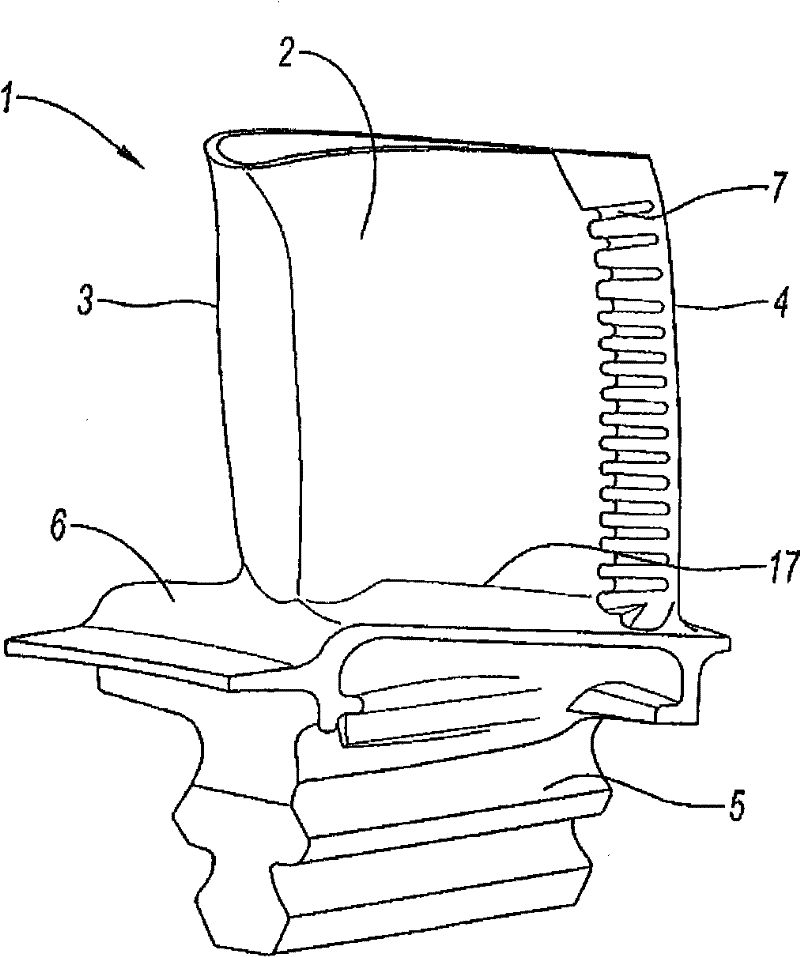Turbine vane with dusting hole at the base of the blade
A technology of turbine blades and dust removal holes, applied in the direction of blade support elements, machines/engines, stators, etc., can solve problems such as damage to the cavity, increase in cavity size, etc.
- Summary
- Abstract
- Description
- Claims
- Application Information
AI Technical Summary
Problems solved by technology
Method used
Image
Examples
Embodiment Construction
[0030] Referring to Figure 1, there is shown a high pressure turbine blade 1 comprising a blade 2 extending between a leading edge 3 and a trailing edge 4, mounted on a platform 6 supported by a blade root 5; the platform 6 is defined by a circular transition The radius 17 is connected to the blade 2 . The blade 1 is provided with a number of ventilation holes 7 at its trailing edge 4 for discharging the cooling air circulating in the cavity of the trailing edge. Figure 2 shows the location of the prior art tunnel 8 which can function as a trailing edge cavity dust removal hole; the hole 8 is at the top of the blade at this cavity. The blade 1 also includes holes 9 on the platform 6 on the suction side of the blade 2. The air from the blade root 5 flows through these holes. The tunnel 9 shown in Figure 2 is located at the trailing edge 4, and its air comes from the fresh air supply duct of the trailing edge cavity.
[0031] FIGS. 3 and 4 each show a cross-section of a turbin...
PUM
 Login to View More
Login to View More Abstract
Description
Claims
Application Information
 Login to View More
Login to View More - R&D
- Intellectual Property
- Life Sciences
- Materials
- Tech Scout
- Unparalleled Data Quality
- Higher Quality Content
- 60% Fewer Hallucinations
Browse by: Latest US Patents, China's latest patents, Technical Efficacy Thesaurus, Application Domain, Technology Topic, Popular Technical Reports.
© 2025 PatSnap. All rights reserved.Legal|Privacy policy|Modern Slavery Act Transparency Statement|Sitemap|About US| Contact US: help@patsnap.com



